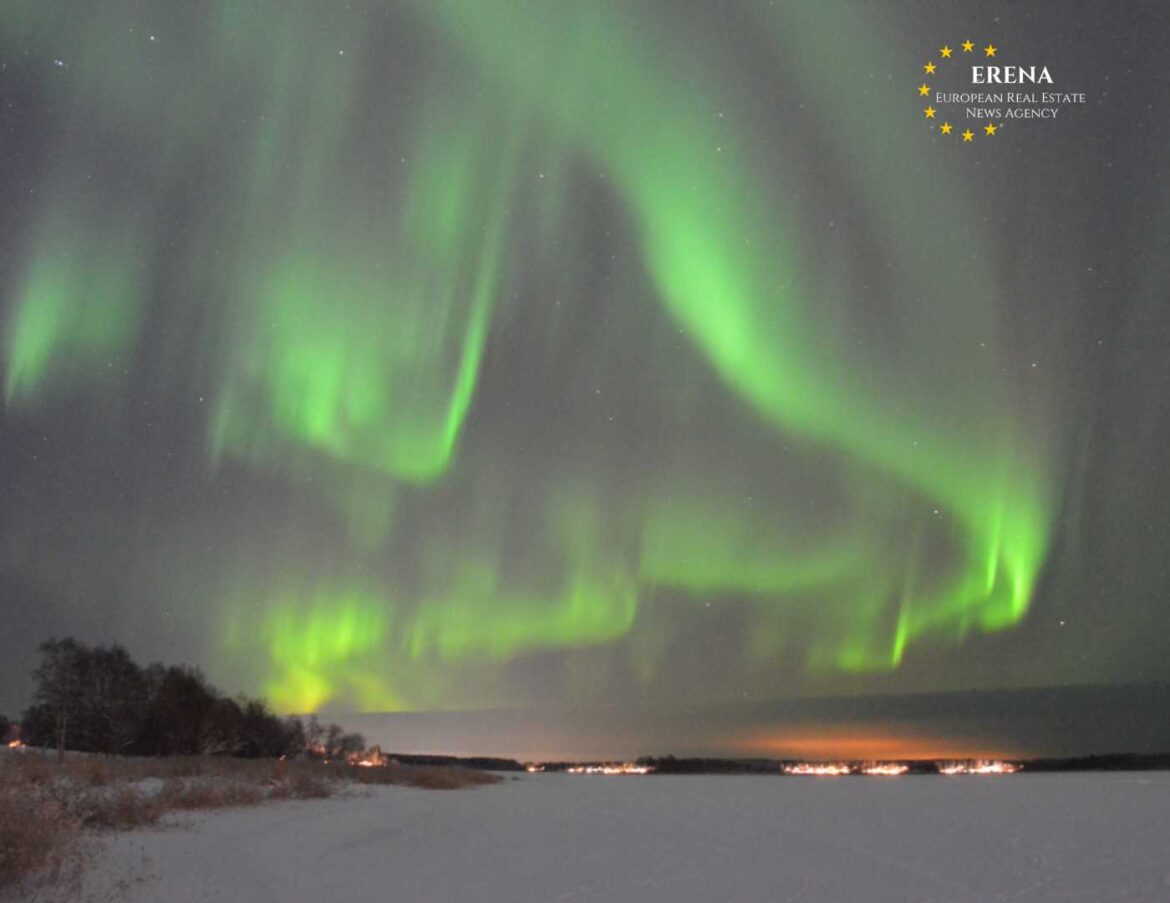The town of Piteå, located in Sweden’s Norrbotten County, is widely regarded as one of the most picturesque destinations in northern Sweden. Thanks to its unique location on the Gulf of Bothnia, diverse natural surroundings, and rich cultural offerings, the city attracts a steady flow of tourists—especially during the warmer months. However, Piteå’s short-term rental market experiences pronounced seasonal fluctuations, which significantly impact rental profitability and housing availability throughout the year.
Tourism Seasonality as a Key Factor
Piteå is particularly popular in the summer, when visitors flock to Pite Havsbad, one of Northern Europe’s largest beach resorts. Summer festivals, fishing, cycling, and outdoor recreation contribute to high demand during the June–August peak season. Local real estate agencies confirm that this period brings the highest demand for short-term rentals.
In contrast, the winter months see a sharp decline in tourist numbers. Although the snowy landscapes offer opportunities for skiing and snowmobiling, tourism drops significantly, resulting in lower rental occupancy rates and seasonal income disparities for property owners.
Rental Prices and Income in Peak Season
Summer brings strong returns for vacation rental hosts in Piteå. During July and August, short-term rental prices increase substantially. Average nightly rates during this high-demand season are as follows:
- Studio apartment – €90 to €120 per night
- One-bedroom apartment – €110 to €160 per night
- Larger coastal homes – starting from €200 per night and upwards
Due to occupancy rates exceeding 85–90% during the busiest weeks, hosts can earn significant income—particularly if their property is located near popular attractions such as Pite Havsbad, the marina, or the historic town center.
In peak months, owners of well-located properties can generate gross monthly revenues between €2,500 and €4,000 (before taxes and maintenance costs). This makes short-term rentals a highly attractive investment for the summer period.
Off-Season Demand Drop
From October through April, demand for vacation rentals decreases considerably. During this time, rental prices typically fall to:
- Studio – €40 to €60 per night
- One-bedroom apartment – €60 to €90 per night
- Multi-bedroom homes – from €100 per night, often with heavy discounts
Occupancy rates during winter can drop to 30–50%, particularly for properties outside the city center or those not adapted to winter tourism. To compensate, many hosts offer monthly rentals, long-stay discounts, or pivot toward renting to temporary workers and students.
Real Estate Investment Potential
Purchasing property for vacation rental purposes in Piteå has become an increasingly popular investment strategy. As of 2025, property prices remain reasonable:
- Studio in central Piteå – €75,000 to €95,000
- One-bedroom apartments – €100,000 to €130,000
- Small coastal homes – €150,000 to €220,000
Additional setup costs for furnishing and equipping a property for short-term rental typically range from €5,000 to €10,000. With proper management and a balanced seasonal strategy, many investors see full ROI within 7 to 10 years.
Management and Taxation
Short-term rental income in Sweden is subject to taxation. Property owners must report rental earnings, which are taxed at personal income rates—often up to 30%, depending on total annual income. However, tax deductions apply for operating expenses such as maintenance, cleaning, and marketing.
Most landlords in Piteå choose to work with professional property management companies that handle bookings, guest communication, and cleaning. Management fees typically range from 15% to 25% of gross rental income.
Platforms and Guest Preferences
Leading booking platforms in Piteå include Airbnb, Booking.com, and Sweden-focused Stugknuten. Guests tend to favor:
- Waterfront properties or homes near the beach
- Amenities like a sauna (especially in winter)
- Fully equipped kitchens
- Free Wi-Fi and parking
- Pet-friendly options
High ratings and positive reviews on platforms like Airbnb significantly boost winter-season booking chances—by 30–50%, according to property managers.
Economic Impact and Seasonal Challenges
The short-term rental market in Piteå contributes meaningfully to the local economy by supporting small businesses, generating tourism-related income, and increasing demand for local services. However, its seasonal nature poses several challenges:
- Unstable income for property owners
- Seasonal employment in hospitality and maintenance
- Imbalances in housing demand and affordability for local residents
Local authorities are considering strategies to extend the tourist season, including promoting winter events, cultural festivals, and nature-based experiences.
Market Outlook and Adaptation Strategies
The short-term rental market in Piteå is expected to remain strong during summer months, while its winter performance will depend heavily on marketing, infrastructure improvements, and expanded tourist offerings.
Some investors are already adopting hybrid models, offering daily rentals during summer and medium-term leases (1–3 months) in winter—for example, to visiting professionals, students, or contract workers.
As interest grows, property prices are likely to rise—particularly in high-demand areas like the harbor, city center, and coastal zones.
Conclusion
Piteå’s vacation rental market displays clear seasonal fluctuations: high profitability in summer and significant drops in winter. Nevertheless, the market remains attractive for well-informed investors who account for these swings in their strategy.
With moderate property prices, strong summer income potential, and continued tourist interest, Piteå represents a promising opportunity for short-term rental investment—especially when managed with flexibility and foresight.

